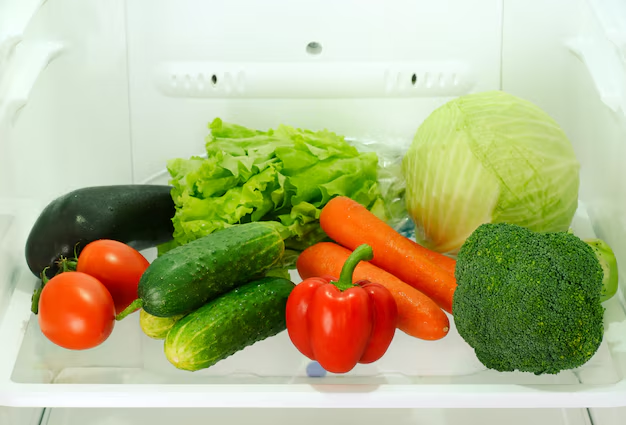How Long Can You Keep Greens Fresh in the Refrigerator?
If you've ever wondered why that fresh bunch of greens you brought home wilts away so quickly, you're not alone. Storing greens properly can be both an art and a science, and understanding how long they last in the refrigerator can help you make the most of your produce. This comprehensive guide will explore techniques to maximize the shelf life of greens, factors affecting their longevity, and practical tips to keep them crisp and flavorful.
🥬 Understanding the Shelf Life of Greens
When it comes to leafy greens, their shelf life can vary significantly based on the type of green and how it's stored. While some greens, like kale and cabbage, are heartier and last longer, delicate varieties like spinach and lettuce can be more perishable.
Types of Greens and Their Longevity
- Kale & Cabbage: These sturdier greens can last about 1-2 weeks in the refrigerator.
- Spinach: Typically stays fresh for around 5-7 days.
- Lettuce (Romaine, Iceberg): Keeps for about 7-10 days when properly stored.
- Arugula & Mixed Baby Greens: More delicate, generally lasting 3-5 days.
It's important to note that these are approximate time frames. The freshness of greens heavily depends on their condition at purchase and how they are stored in your refrigerator.
🧊 Factors Influencing Freshness
Several factors influence how long greens can stay fresh in the refrigerator:
1. Moisture Levels
Moisture is a double-edged sword when it comes to storing greens. While some moisture is necessary to keep them crisp, too much can lead to decay.
Tip: Use a paper towel in storage bags or containers to absorb excess moisture.
2. Air Circulation
Allowing airflow around your greens can help prevent wilting. However, too much exposure can lead to dehydration.
Tip: Store loose greens in a perforated bag or container.
3. Temperature Control
Greens prefer a cool, stable environment. Fluctuations in temperature could lead to quicker spoilage.
Tip: Place greens in the crisper drawer, where humidity is higher and temperatures are more consistent.
📦 Best Practices for Storing Greens
Cleaning and Preparation
Before storing your greens, it's vital to decide if you should wash them immediately or wait until just before use.
- Washing Before Storage: Ideal if you prefer quick access to ready-to-eat greens. Ensure they are thoroughly dried before storing.
Tip: A salad spinner can be an excellent tool for removing excess water after washing.
- Washing Before Use: Suitable for greens with a longer shelf life like kale or cabbage, reducing the risk of moisture-induced spoilage.
Storage Containers
Choosing the right storage container can make a significant difference:
- Plastic Bags: Use perforated or ventilated bags to allow some air circulation while keeping moisture in check.
- Glass Containers: Transparent and airtight, ensuring a stable environment.
- Cloth Bags: These absorb excess moisture and allow airflow, extending freshness.
🥗 Practical Tips for Extending Shelf Life
Here’s how you can extend the freshness of your greens with a few simple habits:
- Inspect Regularly: Check greens every couple of days, removing any spoiled leaves promptly.
- Do Not Crowd: Overcrowding greens can trap moisture between leaves, encouraging spoilage.
- Temperature Check: Ensure your refrigerator maintains a consistent temperature, ideally between 35-40°F (1.6-4.4°C).
Quick Summary of Storage Tips
| 🏷️ Tip | 🌟 Description |
|---|---|
| 📦 Use Right Container | Choose bags or containers that balance moisture and airflow. |
| 🧊 Optimal Temperature | Store greens in the crisper drawer. |
| 💧 Manage Moisture | Use paper towels to absorb excess moisture. |
| 📅 Regular Checks | Refresh storage methods and remove spoiled leaves regularly. |
🛒 Related Subtopics: Buying Fresh Greens
Your strategy starts at the grocery store or farmers market. Here’s how to select the freshest greens for longer storage:
Signs of Freshness
- Color: Look for vibrant, consistent coloring without browning or yellowing.
- Texture: Leaves should be crisp and firm to the touch.
- Smell: Greens should have a fresh, earthy scent.
Seasonality and Source
- Local Products: Often fresher due to reduced transport time.
- Seasonal Buying: Offers produce at peak freshness and nutrition.
🥬 Common Misconceptions about Storing Greens
Myth #1: All Greens Are the Same
Many people treat all types of greens alike. However, understanding the unique needs of each variety can significantly extend freshness.
Myth #2: Plastic Bags Are King
While plastic bags are commonly used, they can trap too much moisture. Opt for ventilated bags or alternatives for better results.
🌿 Closing Insights: Making the Most of Your Greens
Storing greens properly is a simple yet effective way to reduce waste and maximize nutrition in your diet. By following the tips outlined in this guide, you’ll be equipped to keep your greens fresher for longer, ensuring that every salad, stir-fry, or smoothie you make uses the best ingredients possible. Remember, it all starts with choosing fresh greens and being mindful of how they are stored. Happy consuming!
